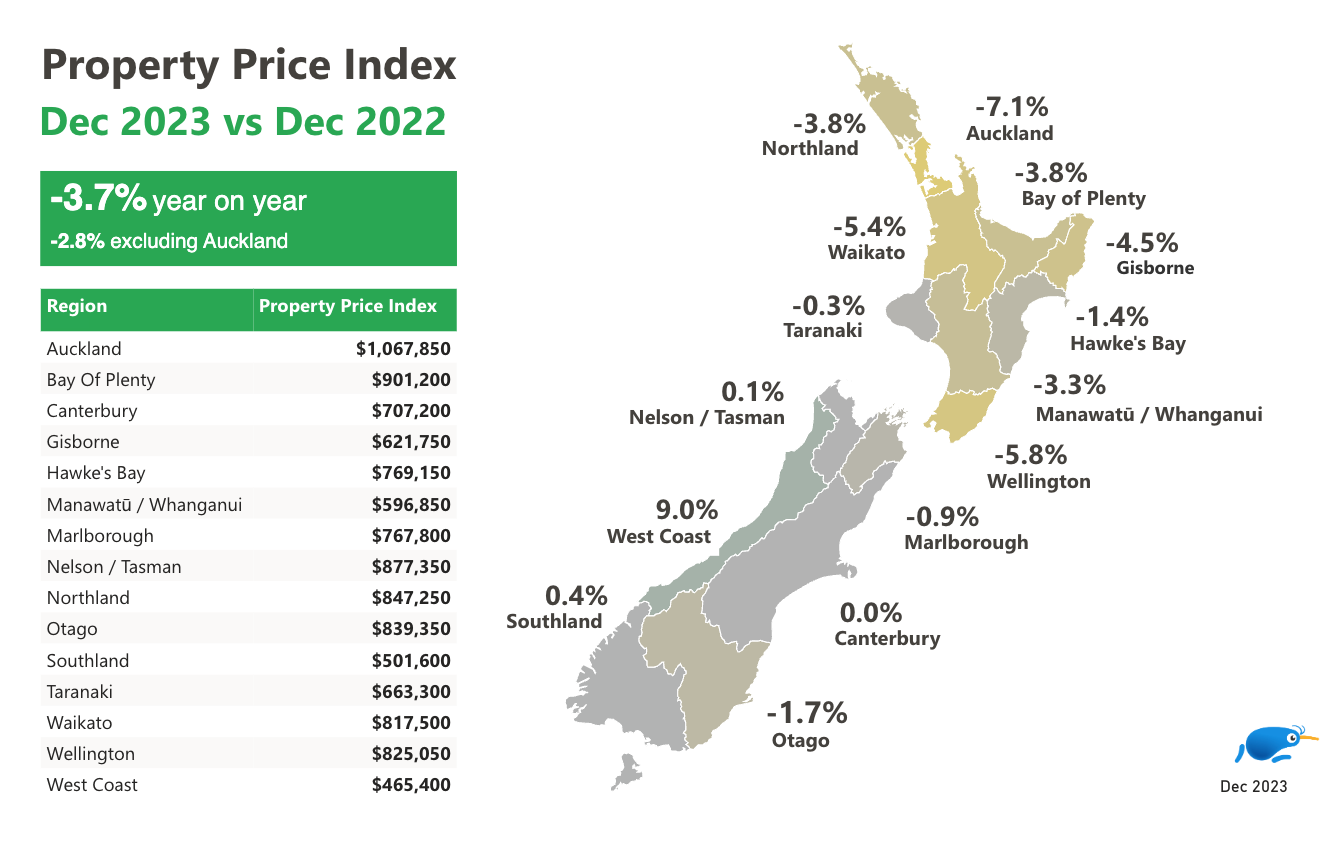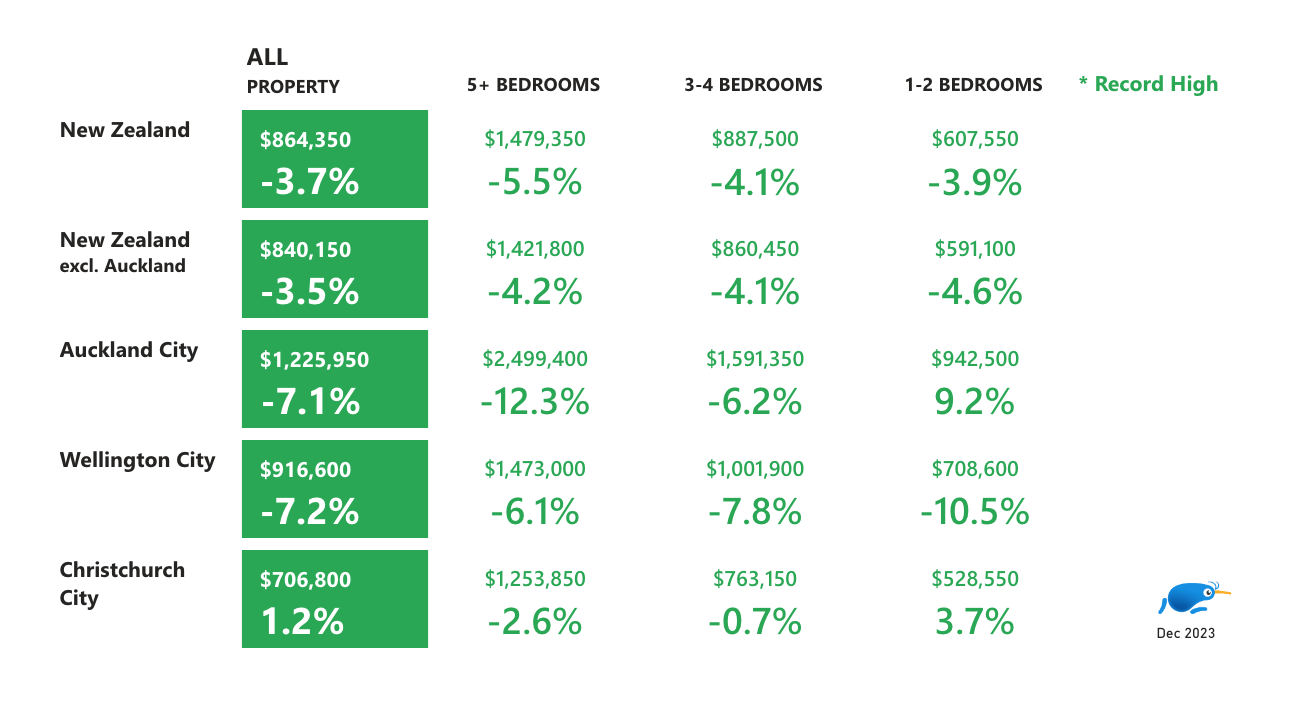News Next article
Aotearoa property prices record slight drop in December
December Property Price Index
By Gavin Lloyd 30 January 2024New Zealand’s property prices have recorded a dip at the end of 2023 according to Trade Me's Property Price Index for December.
The national average asking price for a property was recorded at $864,350, down 3.7 per cent compared to the same time last year.
“Despite the decrease in prices, it's worth noting that the decline is relatively minor compared to consecutive months of double digit drops from earlier in 2023. The property market has seen huge change in 2023 as both sellers and buyers have navigated rising interest rates and inflation but what we are seeing now is the market returning to normality," said Trade Me spokesperson Casey Wylde.
"We have seen the biggest change in our major cities Auckland and Wellington which have come down by 7.1 per cent and 5.8 per cent, this is where there are generally a lot more listings so sellers may be adjusting their prices to remain competitive,” added Wylde.
Following close behind is the Waikato region with a 5.4 per cent drop, making the average asking price for the region $817,500.
Auckland still priciest region
Even with a substantial decrease of over $80,000, Tāmaki Makaurau remains the most costly region to purchase property. The current average asking price for a property in the area is now set at $1,067,850.
After Auckland, The Bay of Plenty emerges as the second most expensive region, boasting an average asking price of $901,200. This is primarily attributed to the Tauranga market, where prices are hovering close to the million-dollar threshold, despite experiencing a 4.2 per cent year-on-year decrease. In December, the average recorded price reached $975,500.
Regional areas such as Nelson/Tasman and Northland surpass some of the capital city regions like Wellington and Canterbury with average asking prices of $877,350 and $847,250.
“When we look outside Auckland, we find some areas where homes are even pricier than in the cities. This happens because houses there are often bigger, making the average price higher.
“In places like Wellington and Canterbury, you see a mix of smaller apartments and townhouses, which brings down the average price for the whole region," said Wylde.
Prices up for smaller properties in Auckland and Christchurch
In the main city centres, the demand for properties with three or more bedrooms experienced a decline. This can be seen in Auckland, where properties with five or more bedrooms registered a substantial 12.3 per cent decrease, reaching an average of $2,499,400.
Christchurch and Auckland were the only major cities where prices went up for smaller dwellings with 1-2 bedrooms. Auckland saw a 9.2 per cent increase in prices for 2 bedrooms or less, reaching an average asking price of $942,500, while Christchurch had a smaller 3.7 per cent increase, bringing the average price to $528,550.
When looking at all properties, Pōneke experienced the largest decrease of the cities, down 7.2 percent overall to an average of $916,600. This was influenced largely by a drop in properties with 1-2 bedrooms which came down by 10.5 per cent, making the average asking price $708,600 for properties of this size.
Big drop in demand compared to October
The demand for properties on the market experienced a substantial 30 per cent decline in December across Aotearoa, marking the most significant month-on-month decrease of the entire year in 2023.
Wellington and Gisborne were particularly affected, witnessing double-digit drops of 40 per cent and 36 per cent, compared to November.
"This isn’t unusual as we did witness both of these areas have a surge last month so the market is adjusting.
“We do often see a seasonal impact on demand, particularly in December when Kiwi are busy making plans for the summer period. We expect this to pick back up when buyers are likely to return to the market in the new year to focus on finding a property,” said Wylde.
Nationwide, supply was down by 13 per cent in December, with Wellington again seeing the biggest drop of 19 per cent.
Author
Other news you might like





